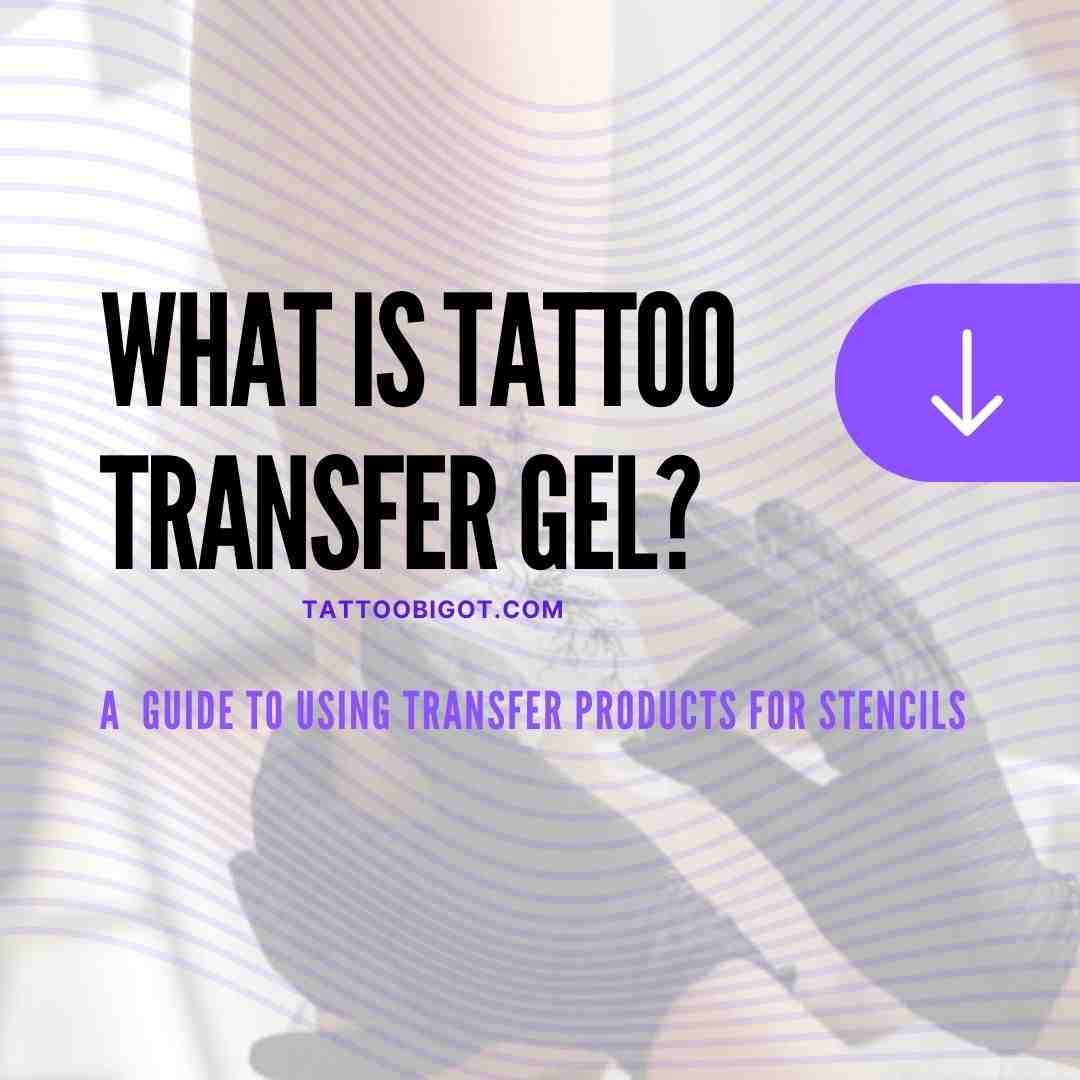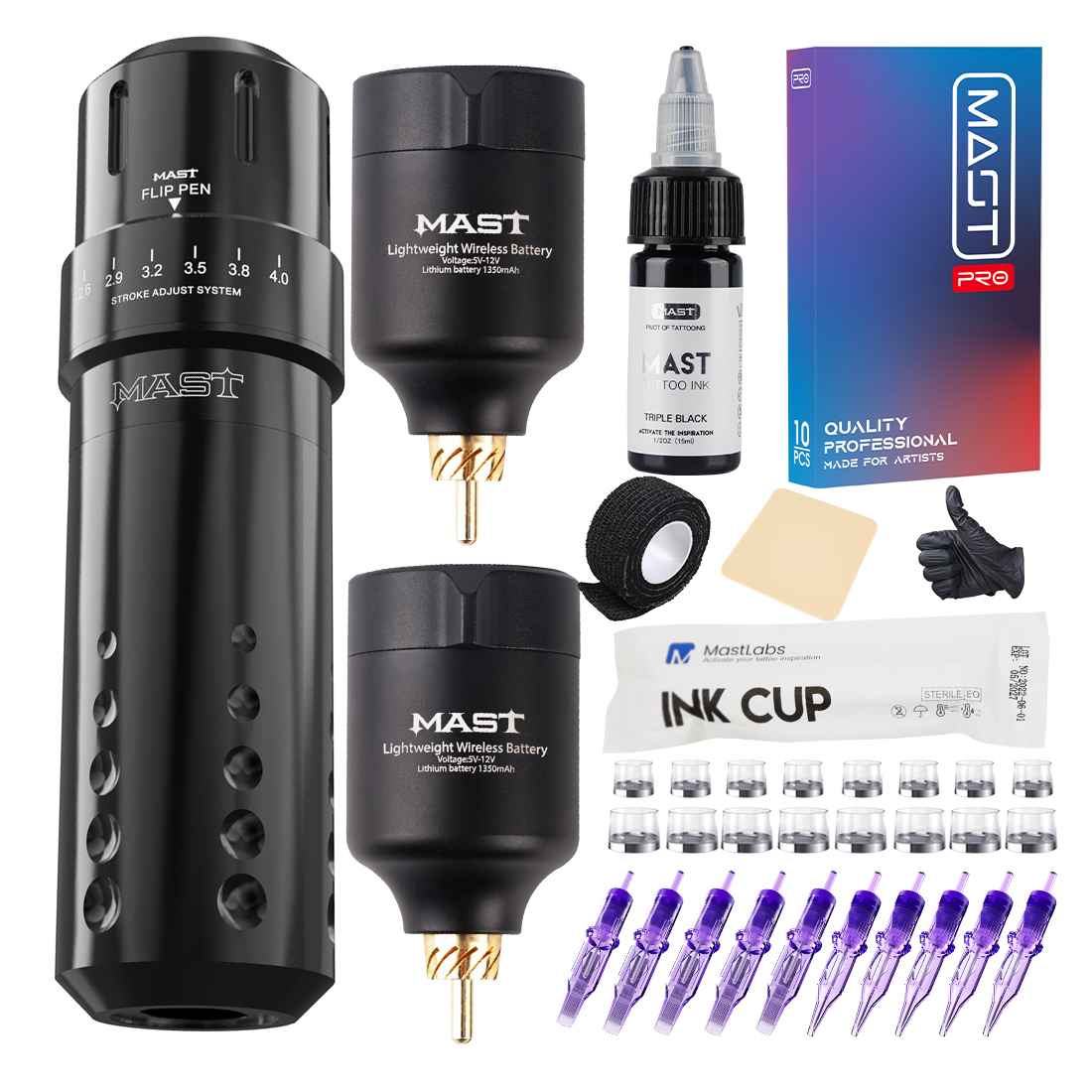Before laying down permanent ink, tattoo artists must first transfer their design onto the client’s skin. Various tattoo transfer methods exist for imprinting these temporary stencils. But many artists today favor convenient transfer gels to reliably reproduce intricate artwork.
Yet some clients still wonder – what is tattoo transfer gel, and how does it work?
This comprehensive guide will demystify tattoo transfer products by examining types of gels, how to apply them, benefits over other transfer mediums, proper safety and storage, plus recommendations for the best gels from brands like Witch Hazel, Stencil Stuff, Thermal Copier, and more.
Overview of Tattoo Transfer Gels
Tattoo transfer gels provide an intermediate step between the original line drawing and tattooing the outline on skin. Artists use these specialized gels to transfer their final pattern securely onto the client in a precise, non-toxic imprint.
The gels contain polymers that coat the skin to help the stencil adhere evenly when pressed or traced over. Transfer gels create temporary yet durable stencils that withstand skin flexing as clients move. The stencils easily wash away after finishing the tattoos.
Transfer gels represent an upgrade over traditional methods like thermo-fax paper and carbon copy stencils. When used properly, they generate accurate, vivid outlines for crisp, consistent tattoos every time.
Also Read: Why Do Tattoo Artists Wrap Their Machines? Exploring This Essential Practice
What is Tattoo Transfer Gel Made Of?
Tattoo transfer gel plays a crucial role in bringing your artistic vision to life. It’s that magical goo that helps transfer your meticulously crafted stencil onto your skin, ensuring precise line work and smooth shading. But what is tattoo transfer gel made of? Let’s find out.
1. Traditional Tattoo Transfer Gels
Let’s start with the classics. Traditional tattoo transfer gels often rely on a trusty trio:
Alcohol: This acts as a solvent, helping the stencil adhere to your skin like glue. Just imagine it giving your design a good, sticky handshake.
Glycerin: This humectant keeps the gel nice and moist, preventing it from drying out and flaking off.
Xanthan gum: This thickening agent gives the gel its gel-ly goodness, ensuring it stays put where you want it – on your skin, not your shirt.
Pigments: To make your design visible, these gels often contain pigments like carbon black or henna. They help to leave behind a crisp, clear outline of your masterpiece.
2. Natural Tattoo Transfer Gels
For the eco-conscious tattoo enthusiast, there’s a growing range of natural transfer gels. These often swap the alcohol for gentler ingredients like:
Aloe vera: This soothing hero calms and protects your skin, while also acting as a binder to keep the stencil in place.
Witch hazel: This astringent tightens pores and minimizes irritation, ensuring your skin stays happy during the tattooing process.
Coconut oil: This moisturizing wonder keeps the gel spreadable and prevents it from feeling like sandpaper on your skin.
3. Special Tattoo Transfer Gels
Need something a little extra? Specialty gels cater to specific needs:
Silicone-based gels: Waterproof and long-lasting, these are ideal for marathon tattoo sessions.
Spirit-based gels: These dry quickly and leave minimal residue, perfect for those who like things neat and tidy.
Vegan-friendly gels: For the ethically conscious, these plant-powered options offer peace of mind without sacrificing performance.
Choosing The Right Tattoo Transfer Gel
With so many options, finding the right gel can feel like searching for a needle in a haystack. Here are some tips:
- Read labels: Pay attention to the ingredients and choose a gel that suits your skin type and preferences.
- Patch test: Before slathering the gel all over, do a small patch test on an inconspicuous area to check for any potential allergic reactions.
- Consult your artist: Your tattoo artist is a wealth of knowledge and can recommend the perfect gel for your specific design and skin.
Also Read: Do Pawn Shops Take Tattoo Equipment? What to Know Before Selling or Buying
How Do Tattoo Transfer Gels Work?
Tattoo transfer gels enable stencil creation through these key steps:
1. Clean the Skin – The artist sterilizes the area and ensures it’s free of lotions, oils or residue.
2. Apply Gel – A thin layer of transfer gel gets smoothly rubbed onto the skin. It leaves a tacky coating.
3. Place Stencil Paper – The completed design printout gets positioned atop the gelled skin area.
4. Trace the Outline – Using a stylus, the artist traces over every line of the artwork to imprint it into the gel below.
5. Peel the Paper – Carefully removing the stencil paper leaves the design perfectly outlined on the skin in transfer gel.
6. Tattoo the Outline – Using the gel stencil, the artist tattoos over the outline, filling it with permanent ink.
7. Remove Gel Residue – Leftover gel wipes away easily with mild soap once finished tattooing.
The semi-adhesive polymers in the gel help capture even fine details to flawlessly replicate intricate line drawings when traced over on skin.
Also Read: Are Tattoo Needles Hollow? A Deep Dive Into Needle Components and Function
Types of Tattoo Transfer Gels
The tattoo industry offers a range of specially-formulated transfer gels:
– Thin viscosity – Flows easily for broader coverage. Good for larger pieces.
– Thick viscosity – Greater tackiness captures fine details. Ideal for precision line work.
– Fast-drying – Sets quicker but allows less repositioning time. Reduces wait between steps.
– Slow-drying – Longer working time for adjustments. Prevents premature setting before tracing.
– Colorless – More discreet look. Allows seeing the skin beneath the gel.
– Colored – Blue/purple tint makes application boundaries clearly visible.
– Scented – Fragranced varieties mask chemical odors.
– Unscented – Hypoallergenic formula reduces risks of skin reactions.
– Wipes – Pre-gelled pads easily smooth on gel layers.
– Bottles – Containers allow dispensing custom gel amounts as needed.
Thinner, fast-drying gels suit large basic tattoos. Precise detailing requires thicker, slower-setting gel. Testing different consistencies finds your ideal match.
Key Benefits of Using Tattoo Transfer Gel
Skilled artists can use many products to apply stencils, but gel offers advantages over other options:
Accuracy – Gels minimally distort or blur intricate designs compared to slippage with paper or thermal stencils.
Sharpness – Even fine lines and small text imprint clearly into quality gels.
Versatility – Gels reliably transfer onto diverse skin types and body areas.
Efficiency – Gels create stencils faster than hand-tracing or repeat carbon copy attempts.
Minimal waste – Reusable gel pads generate less non-recyclable waste than disposable paper.
Client comfort – Gel feels less cold and clammy on skin versus liquid coatings.
Easy cleanup – Gels rinse away with just soap and water unlike stubborn adhesives.
Cost-effective – Affordable gels represent low overhead for the clarity achieved.
For reliability across many tattoo styles and skin types, gels make an excellent all-around stencil transfer solution.
Also Read: Can You Use Expired Tattoo Needles? Why Risk It? Laws, and Professional Safety Standards
Step-By-Step Instructions for Using Tattoo Transfer Gel
Follow these best practices when applying tattoo stencils using transfer gel:
1. Prepare the Skin
- Shave the area if needed and cleanse skin with antimicrobial soap to remove oils.
- Disinfect the skin prior to stenciling per health codes. Let dry fully.
2. Apply Gel
- Use gel sparingly. Too much causes excess residue without improving adhesion.
- Smooth on a very thin, even coat using a disposable applicator. Avoid lumps or streaks.
- Let gel dry 2-5 minutes until tacky. Timings vary by gel viscosity and humidity.
3. Position the Stencil
- Place the stencil paper over the gelled section using body landmarks for alignment.
- Avoid contact until properly placed to prevent premature sticking.
4. Trace the Outline
- Use a stylus with a single sharp point to imprint every contour of the line art into the gel.
- Trace firmly but without tearing the paper. Go slowly around intricate areas.
- Repeat passes on any light lines until fully transferred.
5. Remove the Paper
- Peel the stencil paper away gently at an angle, not straight up. This prevents smudging.
- Go slowly to check all details transferred cleanly. Re-trace any missing spots before the gel dries fully.
6. Tattoo the Outline
- Work decisively when inking over the stencil, before excessive hand oils or friction degrades the gel.
- Follow your planned tattoo sequence, starting at the outline and moving inward.
- Wipe smears immediately to keep the remaining gel stencil crisp.
7. Clean Up
- Remove all leftover gel thoroughly after finishing the tattoo using mild, fragrance-free soap and warm water.
- Triple check no residue remains that could interfere with healing or aftercare.
With practice, the gel application process becomes quick and seamless for flawless tattoo stencil creation.
Recommended Tattoo Transfer Gel Products
Here are some of the best tattoo transfer gel products you can find.
1. Witch Hazel by Thermal Copier – An ultra-thick non-drip gel perfect for detailed linework. Dries slower for adjustments. Provides very opaque stencils.
2. Stencil Stuff – The Solution – A moderately thick all-purpose gel with colorless and purple tint options. Smooths easily with applicators.
3. Fusion White Transfer Gel – A fast-drying white gel enabling stencils on dark skin. Bonus numbing effect. Portable wipes available.
4. Immortal Tattoo Transfer Gel – A vegan-friendly thick gel that applies sheer colorless coats. Affordable large bottles.
5. Tattoo Transfer Gel by Tatsupplies – A thinner gel with unique rollerball applicator. Quick drying time suits bold outlines.
6. FK Irons Neo-Thermal Stencil Solution – A coverall stencil product designed by renowned artist Freddy Krueger. All skin types.
7. After Inked Purple Plus Transfer Gel – Vibrant purple tint makes application clear. Gel thickness adaptable based on layers applied.
8. Airbrush Tattoo Stencil Application Gel– A specialty gel formulated for airbrush tattoo artists needing maximum translucency.
9. Bold as Love Transfer Gel – Slow setting blue colored gel allowing ample repositioning time before tracing. Long-lasting stencils.
Tips for Troubleshooting Tattoo Transfer Gel Issues
Here are some tips for troubleshooting tattoo transfer gel issues if the arise.
| Problem | Cause | Solution |
|---|---|---|
| Fading or blurry stencil | Too much time elapsed before inking | Work quicker while gel is still sticky |
| Washing away when wiped | Excessive pressure while tracing | Use lighter but firm hand when imprinting |
| Poor adhesion | Unclean skin or residue present | Ensure skin is shaved, cleansed, dried fully |
| Patchy stencil transfer | Uneven gel application | Apply gel in a consistent thin layer without streaks |
| Smudging, distorted lines | Contact before gel dries, or paper removed incorrectly | Avoid touching the stenciled area and peel paper slowly |
| Skin irritation | Allergic reaction to gel ingredients (rare) | Switch to an unscented, hypoallergenic variety |
| Difficult cleanup | Allowing gel to dry too long before removal | Clean skin promptly when finished tattooing |
Proper Tattoo Transfer Gel Handling and Storage
Like any tattoo supply, transfer gels require proper handling and storage for safety and best results:
- Clearly label containers to avoid cross-contamination with other products.
- Always use clean, disposable applicators. Never re-dip used applicators to prevent contamination.
- Keep bottles sealed tightly except when dispensing gel. Oxygen exposure degrades gel over time.
- Store away from heat, moisture, and direct light which can alter gel chemistry.
- Allowing gels to freeze may permanently alter viscosity, separations, etc. Keep at room temperature.
- Check expiry dates and discard expired gels no longer safe or effective. Shelf life is generally 2-3 years.
- Clean pouring spouts and bottle exteriors periodically to prevent any buildup of dried gel.
- As medical-grade products, gels must be used and disposed of per professional studio protocols and regulations.
Proper care keeps gels optimally effective and avoids cross-contamination or unsafe use. Discard aging or contaminated gels.
Are Tattoo Transfer Gels Safe?
Professional tattoo transfer gels meet high biocompatibility standards for safe, non-toxic use when applied as directed. However, certain precautions must be taken to make tattoo transfer gels safe for use;
- Artists with gel allergies may need hypoallergenic options. Pre-test skin sensitivity before prolonged use.
- Avoid contact with eyes, lips, and other mucous membranes. Flush with water if accidental exposure occurs.
- Review safety data sheets to ensure proper handling, disposal, and first aid information in case of misuse.
- Clients should alert artists regarding any skin sensitivities needing special precautions.
- Only use reputable gels from specialty tattoo suppliers, not homemade DIY substitutes.
Are Tattoo Transfer Stencils Mandatory?
While stencils are standard practice, some experienced artists do create freehand tattoos without them. For example:
Traditional hand-poked styles – Following just guide marks, an artist tattoos the piece organically using skill and intuition alone.
Single pass tattoos – For simple text or graphics, a very steady artist may be able to tattoo a flawless outline in one pass without stenciling first.
Freeform techniques – Nuanced shading and textures emerge intuitively based on the flow of client and artist energy.
Collaborative pieces – Custom artwork tailor-made on the spot may rely more on style chemistry than stencils.
However, for most tattoo applications, transfer gel stencils provide indispensable benefits in precision, efficiency, and client reassurance over freehand methods. Beginners in particular should always work from a properly transferred guide outline.
Conclusion
So, what is tattoo transfer gel? As a reliable tattoo supply staple, quality transfer gels allow artists to reproduce intricate designs as temporary stencils on the skin.
They capture detail sharply, apply uniformly, and remove cleanly after use. Tattoo transfer gels enhance efficiency in the tattoo process while offering advantages over other transfer methods.
However, not all gels perform equally. Testing products to find the ideal viscosity, dry time, and tactile feel based on your techniques prevents stencil mishaps.
Responsible handling and storing of gels maintains safety and integrity. While a consumable supply, gels remain a long-lasting value for any tattooist seeking crisp, professional results.
Frequently Asked Questions
How long do tattoo transfer stencils made with gel last on skin?
Up to several hours typically. Avoid contact with clothing, irritation, or moisture that could prematurely degrade the stencil.
Can I use tattoo transfer gel that has expired?
No, discard expired gels as they may harbor contamination or lose effectiveness. Always check manufacture dates and use gels within 2-3 years.
Is tattoo transfer gel reusable?
No, gels are single-use only. Contaminants make gels unsanitary after contact with skin. Never attempt to reclaim gel.
Can I make my own DIY tattoo transfer gel at home?
Not recommended. Products not formulated specifically for tattoo use risk reactions. Only use gels from reputable tattoo suppliers.
How do I remove a tattoo transfer gel stencil if it won’t wash off?
Gently rub with an oil-dissolving cleanser like baby oil or makeup remover. Never pick, peel, or scratch excessively at residual gel.
Do I apply tattoo transfer gel before or after shaving the area?
Always shave first, then disinfect and fully dry the skin prior to gel application. Any moisture or oils will block adhesion.
What can I do if my tattoo transfer gel stencil fades before completing the tattoo?
Carefully re-trace the faded sections using the original design printout aligned over landmarks as a guide before progressing.
Is tattoo transfer gel sticky?
Gels feel mildly tacky when first applied to grab the stencil. But the residue washes away easily after tattooing without remaining sticky.
Can I use tattoo transfer gel on sensitive skin?
Yes, most quality gels are safe even for sensitive skin. But test a small area first for potential reactions before broader use if concerned.
How do I thin thickened tattoo transfer gel?
Adding just 1-2 drops per ounce of distilled water may restore viscosity if gels thicken over time. Shake well to mix thoroughly.






